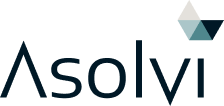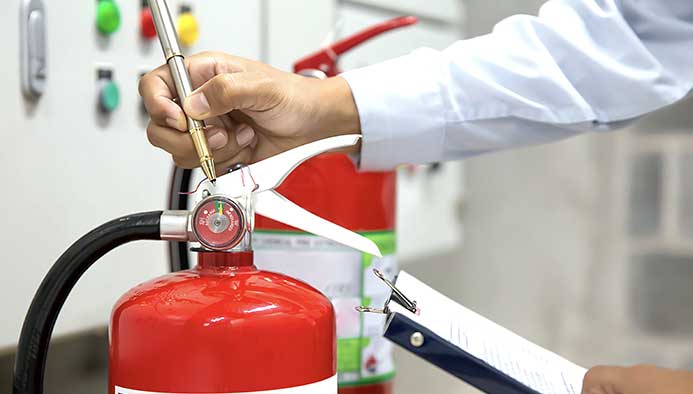Kraus Feuerschutztechnik (KFT) is one of the leading providers of fire protection solutions in southern Germany. Originally founded in 1969 and located just south of Stuttgart, the company now has 20 employees and has been led by CEO Marc Hornickel since 2013. One of his first steps in his role was to review the company’s processes and procedures; a move which ultimately led to KFT adopting TIVAPP to manage its operations in 2015.
Besides its ability to help to automate a wide range of processes, TIVAPP was selected by KFT because it needed a solution that was able to not only provide in-depth documentation, but was also able to provide that documentation across a wide range of component / equipment types. This was important to KFT because, in addition to maintaining simple components such as fire extinguishers and fire protection doors, KFT also maintains complete fire extinguishing and fire alarm systems. Due to their complex database structure, TIVAPP was the only solution that was able to map these systems and enable them to be checked and maintained.
Analysing its processes is an ongoing focus for KFT and they then use TIVAPP as a means of improving, implementing and managing them. Over the years, TIVAPP has been used by KFT to automate many its processes. For example:
Reporting defective / faulty components
Prior to adopting TIVAPP, faults were noted using a paper-based system, thus leaving considerable scope for error and misunderstanding. Also, as photos could not be attached to a record, identifying and ordering the correct replacement parts was difficult and, understandably, error prone. Not only was identifying the appropriate spare part an issue, but KFT also had the problem of identifying the precise model and version of the equipment that it was asked to maintain.
If faults are found during a maintenance visit, the KFT service technician is now able to record it directly against the relevant component, using the TIVAPP fault catalogue. This not only saves the technician both time and effort, but also ensures that the fault is appropriately classified. Thus, as well as ensuring that the fault is easily identified, TIVAPP also enables KFT to capture data accurately. This means that reports can be prepared and any trends or patterns identified and highlighted. This data is obviously of value to both KFT and its customers but could also ultimately be useful to manufacturers and industry bodies.
TIVAPP also leads the market in its use of photos to identify, report and rectify faults. Because TIVAPP enables photos to be stored against the appropriate record, this helps KFT to ensure that the appropriate replacement is procured and supplied and also serves as proof to the building’s owner or other interested parties such as insurers or other maintenance providers.
KFT also makes good use of TIVAPP’s unique component identification solution – TIVID. This means that each component has its own ID, which KFT then combine with a sequential job number to create a unique but helpful identification number for that specific fault. If either the fault cannot be rectified directly on site or approval / clearance from the building owner /operator has not been obtained, the engineer records this using TIVAPP. An itemised quote is then generated, allowing the approver to see parts and labour costs. If ultimately approved, TIVAPP can then create the necessary job records, invoices and stock orders.
Component-specific data
KFT also utilises this really useful TIVAPP feature to both enhance its offer to customers and make its operations more efficient. Prior to adopting TIVAPP, it was very difficult for KFT technicians to know what data to capture, what tests to carry out and what replacement parts to order and fit. The resulting errors and delays cost both time and money.
TIVAPP is the only fire and safety solution to offer component-specific data entry, so that data input requirements are tailored to the requirements of each specific component type. This means that, for example, documentation and test requirements can be made specific to each component type. At a more detailed level, the appropriate replacement batteries or fire extinguisher refills can be automatically ordered or engineers can automatically generate a list of the appropriate replacement parts. It also means that specific checklists can be automatically generated and, where relevant, time stamps automatically applied.
QR Codes
These days, most equipment is barcoded, which means that technicians can identify the specific model quite easily, However, this is very much a one-way process and does not enable any data to be recorded against a particular piece of equipment. With QR codes, the situation is very different. To help it to provide an excellent level of support to its customers, KFT’s customers are able make use of the QR code capability within TIVAPP. Building owners are able to report faults or damage directly to KFT by scanning the QR code on a piece of equipment. This means that there are no issues in terms of determining precisely which piece of equipment is concerned or its location. If necessary, safety / technical datasheets can be downloaded by KFT’s customer, who can also, if appropriate, download previous test reports.
For the future, KFT plans to use TIVAPP to help it to save even further time and money by automating more processes and procedures. Their next immediate step will be to automate the generation of quotations for customers, based on the equipment or component faults discovered. In the longer term, their aspiration is to be one of the first users of the forthcoming web-based version of TIVAPP.
By automating its processes using TIVAPP, KFT has become a successful and developing business and, as a result, has been able to invest in building innovative new revenue streams, such as online training. KFT is a prime example not only of how appropriate software can not only grow with a company, but can also help a company to grow.


